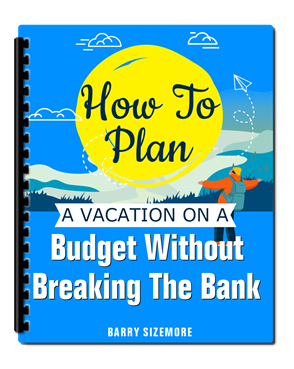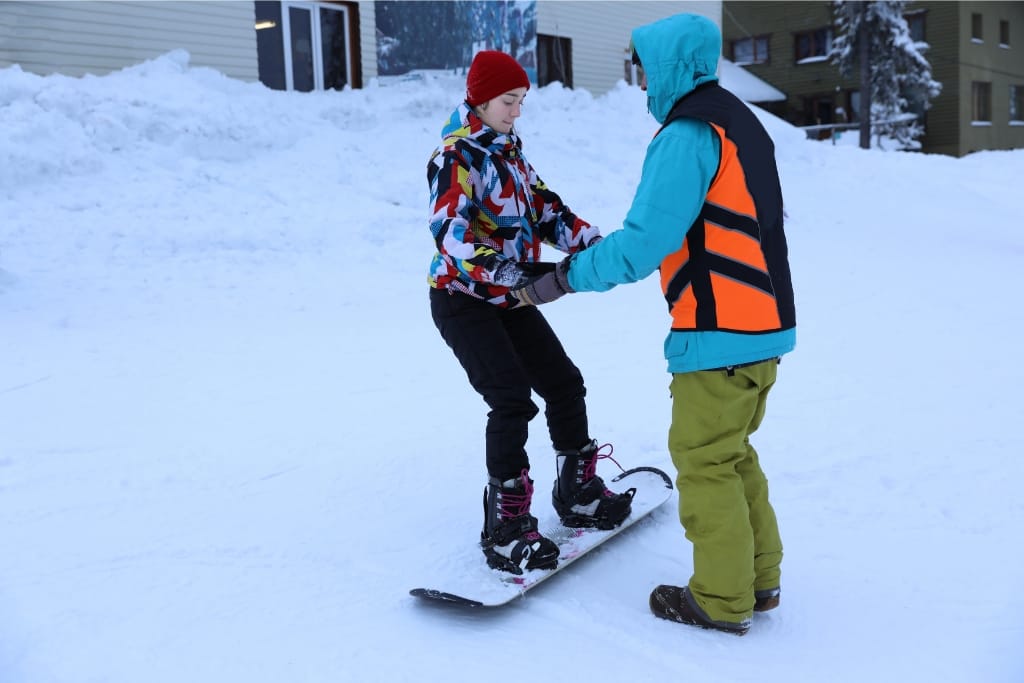Snowboarding opens up a world of excitement, adventure, and unparalleled freedom on the slopes.
It's a sport where balancing technique and enjoyment create unforgettable moments in the snow.
No matter where you’re starting from, learning the basics and building your skills step by step can make every run smoother and more enjoyable.
Strap in, find your rhythm, and prepare to take on the slopes with these must-know tips that will guide you toward confident snowboarding.
1)) Hire A Snowboarding Instructor
Learning from a professional snowboarding instructor is one of the best ways to build a strong foundation and confidence on the slopes.
A trained instructor can teach you proper techniques, help you understand body positioning, and provide valuable tips tailored to your skill level.
They can also assess your progress, correct mistakes in real time, and ensure your safety throughout the learning process.
Investing in professional guidance sets you up for success as you take your first strides in snowboarding.
2)) Choose The Right Gear
Having the right snowboarding gear is essential for both comfort and performance on the slopes.
Proper gear starts with a snowboard that suits your height, weight, and riding style, ensuring better control and stability.
Equally important are well-fitted boots that provide support and reduce fatigue, along with bindings that securely attach you to your board.
Don't overlook the importance of a quality helmet, goggles, and weather-appropriate clothing to stay safe and comfortable in changing conditions.
Choosing equipment tailored to your needs helps you focus on improving your skills and enjoying the ride.
3)) Learn To Strap In
Learning to properly strap in is a fundamental step that sets the tone for your snowboarding experience.
Start by finding a flat area to practice and make sure your snowboard is positioned securely.
Sit down or crouch to avoid slipping, and fasten your bindings snugly without over-tightening, ensuring a comfortable but firm fit.
Double-check that both your boots are secure to prevent unnecessary adjustments while riding.
Mastering this essential skill ensures you’re ready to focus on the thrill of your run with confidence and ease.
4)) Start On Gentle Slopes
Starting on gentle slopes is crucial for building confidence and getting a feel for snowboarding.
These slopes offer a forgiving environment where you can practice balancing, turning, and stopping without the added pressure of steep terrain.
Focus on maintaining a relaxed posture and steady rhythm as you make your way down.
Gentle slopes also provide the perfect space to recover from falls and refine your techniques without fear.
Starting in this controlled setting sets the stage for smoother progression and greater self-assurance as you take on more challenging runs.
5)) Master Balance And Stance
Mastering your balance and stance is at the heart of effective snowboarding.
Start with a relaxed yet controlled posture, keeping your knees slightly bent and your weight centered over the board.
Distribute your weight evenly between both feet and avoid leaning too far back or forward, as this can affect your stability.
Practice shifting your weight smoothly to control turns and maintain flow.
Prioritizing balance and adopting the correct stance helps you achieve better control and pivot confidently on the slopes.
6)) Practice Falling Safely
Falling is an unavoidable part of learning to snowboard, so practicing how to fall safely is essential for minimizing the risk of injury.
When you feel yourself losing balance, try to fall on your side rather than backward or forward to protect your wrists and tailbone.
Keep your arms close to your body to avoid instinctive bracing that might lead to unnecessary strain or injuries.
Learning to fall correctly not only helps you stay safe but also allows you to recover quickly and keep progressing with confidence.
7)) Control Speed With Edges
Learning to control your speed using your snowboard's edges is a vital skill for maintaining safety and confidence on the slopes.
Use your toe edge to lean forward or your heel edge to lean back, applying pressure as needed to regulate your pace.
This technique also helps you manage your trajectory and avoid obstacles effectively.
Practice smooth transitions between edges to maintain balance and prevent sudden stops or slips.
Mastering edge control ensures you can confidently handle varying slopes and conditions while enhancing your overall riding experience.
8)) Learn To Carve Turns
Learning to carve turns is a key progression in advancing your snowboarding skills, as it allows for smoother, more controlled rides.
This technique involves leaning into your turns while engaging the edge of your board to cut into the snow, creating clean arcs without skidding.
Focus on shifting your weight fluidly from your toes to your heels as you turn, maintaining a steady rhythm and keeping your movements intentional.
Start with gentle turns on easy terrain before challenging yourself with steeper slopes.
Mastering this skill enhances your agility and precision, making each run feel more dynamic and rewarding.
9)) Look Ahead, Not Down
Keeping your gaze ahead rather than focusing on your snowboard is a critical habit for maintaining balance and control.
Looking down can disrupt your posture and hinder your ability to anticipate changes in the slope or upcoming obstacles.
Instead, focus on where you want to go, letting your peripheral vision guide your immediate movements.
This forward-looking approach helps you stay aligned with the terrain and make smoother transitions.
Developing this skill ensures you ride with greater awareness and confidence on every run.
10)) Maintain Proper Posture
Maintaining proper posture is fundamental to achieving control and preventing fatigue while snowboarding.
Keep your back straight and shoulders aligned with your board, avoiding any excessive leaning that compromises your balance.
Bend your knees slightly to absorb shocks from uneven terrain and maintain flexibility.
Ensure your weight is evenly distributed, helping you react smoothly to changes in slope or direction.
Prioritizing correct posture contributes to a stronger foundation, allowing you to ride more comfortably and with greater efficiency.
11)) Stay Patient And Persistent
Learning to snowboard can be challenging, especially as you encounter new techniques and terrains.
It's important to remember that progress often comes in small steps, and skill development takes time.
Stay patient with yourself, celebrating each milestone and viewing setbacks as opportunities to grow.
Consistent practice and a positive mindset are key to overcoming obstacles and building confidence on the slopes.
Approaching your snowboarding journey with persistence ensures steady improvement and lasting enjoyment of the sport.
Conclusion
Mastering the art of snowboarding is a rewarding and exhilarating experience that combines technique, persistence, and safety awareness.
Each skill, from practicing balance to learning how to carve turns, adds to your confidence and control on the slopes.
By staying patient, focusing on proper form, and gradually building your abilities, you can fully enjoy the thrill and freedom that snowboarding offers.
With dedication and mindfulness, every ride becomes an opportunity to grow and revel in the beauty of the mountains.
Download Our Free E-book!







